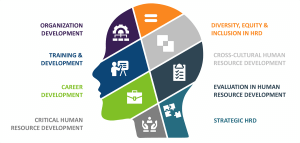As businesses continue to flourish and operations expand, enterprises are seeking to leverage economical intelligence services, with in-house research teams increasingly reliant on outsourcing intelligence gathering activities, enabling smoother and streamlined functions.
The secret behind a successful business is its extensive network of market research activities. An enterprise devoid of robust market research capabilities is like a ship without RADAR- directionless and without purpose. Naturally, this entails heightened budgetary allocation with respect to deploying the most contemporary market research platforms. Studies have concluded that American companies spend nearly US$ 15 billion on third-party market research every year.
While this may not necessarily be a problem for large-scale corporations, small and medium sized enterprises need to look for ways to optimize operational costs. Hence, the popularity of low cost research platforms is being highlighted at various organizational levels. How to achieve maximum growth with minimal expenditure is the mantra of contemporary market research approaches.
When it comes to measuring the costs, the initial capital expenditure may be high, as it primarily involves spending on robust infrastructure- both hardware and software. When thinking about the long-term gains, this expenditure is negligible. This is because the presence of sound research infrastructure results in better outcomes, especially with regards to research quality. Here are some practical approaches to help achieve research costs optimization:
Incorporate Flexible Pricing Market Research Subscriptions
While conducting market research, industry stakeholders have highly customized research requirements. Realizing that the one-size-fits-all approach may not be applicable for clients demanding specific requirements, market intelligence providers have been capitalizing on the trend of flexible or dynamic pricing.
Simply speaking, dynamic pricing refers to charging different prices for a product or service rendered, depending on customer or client requirements. In the field of market research, this plays a critical role in determining service outreach. For instance, by utilizing market research subscription platforms such as MarketNgage, clients can avail the full experience of an exhaustive research study, while accruing 60% of cost savings prompting enhanced scale of operations.
Besides, deploying a pay-as-you-use research model would enable access to a select research category, say a particular segment, company or region. Also, renting out research services has emerged as a highly convenient option for clients, permitting them to visit specific sections without the need to actually purchase the report and store it on their database.
Limiting of Target Audience to Restricted Numbers
Concerned about exceeding budgetary limits with regard to sample size? The answer to this dilemma is quite elementary- reduce the target population numbers. While this could possible restrict the scope of analysis, commissioning focus studies to let’s say around 8 to 12 members instead of 20 to 25, it does save costs by as much as a quarter or half. In fact, it is reported that surveys from limited members offer deeper insights compared to a larger population size.
This approach is especially beneficial when the company deploys multiple focus groups, specifically if it’s a new venture. Officials can identify gaps mentioned by a modest number of participants if any, facilitating a smoother transition towards alternative growth mapping strategies. Furthermore, at any given point of time, it becomes impractical to obtain data from each and every subject in a large sample size, as it consumes immense time, energy and money to accommodate those findings.
However, this does not mean that the scope of the research study will not be limited. Without any doubt, increasing the sample or population size tends to drastically reduce error margins. However, studies also conclude that increasing the sample size does not necessarily affect survey bias. Moreover, a large sample size may not be able to correct methodological problems, including under coverage or non-response bias.
Use Social Media to Significantly Reduce Research Costs
Extensive virtual business networks can significantly aid corporations, especially smaller businesses looking to grow their enterprise size. Given the deepening penetration of digital literacy, companies cannot afford to relegate social media analytics to the backburner, this is probably the single most important way to understand the digital footprint of clients and prospects.
Over the years, popular social media platforms have enabled enterprises to segment and analyze desired prospects via demographic, behavioral or location-based tracking. Just through optimum social sentiment analysis, enterprises are able to generate leads anywhere from US$1-$20, in terms of cost per click. Naturally, figures such as these on a daily basis could lead to significant economization of budgets.
Platforms such as Kissmetrics, for instance, have been instrumental in facilitating enhanced customer engagement of prominent software-as-a-service (SaaS) corporations, enhancing revenue prospects and substantial cost reductions. A major beneficiary of this platform is PagerDuty, which reported a 25% boost in trail engagement by using Kissmetrics Cohort Reports.
Try Outsourcing Business Intelligence Services- Could be a Game Changer
Outsourcing has emerged as a highly budget friendly approach towards disseminating market intelligence services. In-house research teams in large scale enterprises outsource market research operations, which has yielded credible growth opportunities for homegrown market research companies, particularly across India.
Attributed to this trend, these homegrown market research companies have emerged as the potential leaders. While outsourcing market research & intelligence operations, expenditure on establishing required infrastructure can be done away with to a major extent. Furthermore, companies have to spend comparatively less on training and recruitment of professionals. This would help the organization devote more time on other aspects of the business.
Besides, there is always round-the-clock work when data and intelligence gathering operations are outsourced. Given that different countries operate in multiple time zones, one can ensure that there is minimal to no disruption in working hours, enabling consistent data accumulation and assimilation activities, helping maintain operational continuity.
Conclusion- Future Possibilities for Low-Budget Market Research
In today’s age, research requirements are becoming increasingly disparate. Analysis have to be customized as per client requirements. Consequently, it has become important to allocate different budgetary targets to these approaches. Naturally, this tends to augment expenditures on building adequate research infrastructure. Hence, several businesses prefer to outsource market research operations to third parties.
With the size of businesses of major industry stakeholders expanding with each passing day, there is always the need to economize on spending, in order to broaden profit and revenue margins and ensure business continuity. Also, hiring independent market research teams is an expensive affair, prompting them to hire external market research providers, which translates into more accurate insights. Furthermore, hiring external research providers can validate internal research.

Recognising excellence across the Asian Pacific.
Nominate now ➜
Read the latest and past issues of APAC Insider.
Explore issues ➜
Find out how we can help your business grow.
Find out more ➜




















